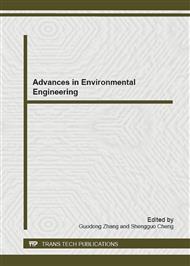[1]
J. Zhang, Z. F. Zhang, S. M. Liu, Y. Wu, H. Hong, and H. T. Chen: Global Biogeochemical Cycles, Vol.13 (1999), p.1101
Google Scholar
[2]
H. Harenz, W. Köster, and D. Merkel: Agrobiol Res, Vol. 45 (1992), p.287
Google Scholar
[3]
L. Ahti, G. Kirsti, K. Pirkko, R. Antti: Science of the Total Environment, Vol. 365(2006), p.240
Google Scholar
[4]
J. L. Hatfield, and J. H. Prueger: Nitrogen over-Use, under-Use, and Efficiency. International Crop Science Congress Proceedings. 4th International Crop Science Congress, Brisbane, Queensland, Australia (2004), p.52
Google Scholar
[5]
A. Dobermann, and K. G. Cassman: Science in China Ser: C Life Sciences, Vol.48 (2005), p.747
Google Scholar
[6]
Information on http://www.millenniumassessment.org.
Google Scholar
[7]
G. X. Xing, and Z.L. Zhu: Biogeochemistry, Vol.57/58 (2002), p.407
Google Scholar
[8]
Z. L. Shen, Q. Liu, S. M. Zhang, H. Miao, and P. Zhang: Ambio, Vol.32(2003), p.66
Google Scholar
[9]
W. J. Yan, and S. Zhang: Global Biogeochem Cycles, Vol.17(2003), p.5
Google Scholar
[10]
Z. L. Shen, and Q. Liu: Environ Monit Assess, Vol.153(2009), p.29
Google Scholar
[11]
China's county-level agricultural database of 1990 and 2000. National Resources and Environmental Data Center, China.
Google Scholar
[12]
R. W. Howarth, G. Billen, D. Swaney, A. Townsend, N. Jaworski, K. Lajtha, et al: Biogeochemistry, Vol.35(1996), p.80
Google Scholar
[13]
V. Smil: Global Biogeochem Cycles, Vol.13 (1999), p.650
Google Scholar
[14]
V. Smil: Enriching the Earth: Fritz Haber, Carl Bosch and the Transformation of World Food Production. Cambridge:MIT Press(2001).
DOI: 10.7551/mitpress/2767.001.0001
Google Scholar
[15]
L. Yang, and B. Sun: Nutrient cycling, balance and management in farmland ecosystem of China. Beijing: Science Press(2008).
Google Scholar
[16]
W. X. Wang: China Environ Science, Vol. 11 (1994), p.325
Google Scholar
[17]
Z.L. Shen: Mar. sci, Vol.1 (1996), p.62
Google Scholar
[18]
C. Liu, M. Watanabe, and Q. X. Wan: Nutr Cycl Agroecosyst, Vol.80 (2008), p.30
Google Scholar
[19]
B. Xiang, M. Watanabe, Q. X. Wang, S. Hayashi, and J. Y. Liu: Science of the Total Environment, Vol.363 (2006), p.141
Google Scholar
[20]
G. X. Xing, and X.Y. Yan: Environmental Sciences & Policy, Vol.2 (1999), p.359
Google Scholar
[21]
R. Burkart. Michael, and E. James. David: Journal of Environmental Quality, Vol.28 (1999), p.853
Google Scholar
[22]
IPCC: International Panel on Climate Change Guidelines for National Greenhouse Gas Inventories, Chapter 4. Agriculture: Nitrous oxide from agricultural soil and manure management. OECD, Paris (1996).
Google Scholar
[23]
M. O. Andreae, and P. Merlet: Global Biogeochem. Cycles, Vol.15 (2001), p.959
Google Scholar
[24]
W. Y. Yan, C. Q. Yin, and S. Zhang: Biogeochemistry, Vol. 45 (1999), p.9
Google Scholar
[25]
Information on http://www.nrcs.usda.gov/technical/ECS/nutrient/tbb2. html.
Google Scholar
[26]
V. N. Bashkin, S. U. Park, M. S. Choi and C. B. LEE: Biogeochemistry, Vol.57/58(2002), p.391
Google Scholar
[27]
G. X. Xing, and Z. L. Zhu: Nutr Cycl Agroecosyst, Vol.57 (2000), p.69
Google Scholar


